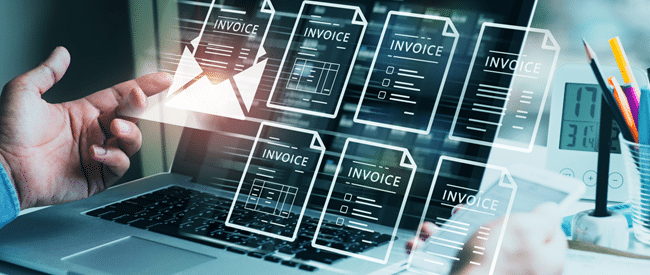In a career spanning more than 20 years as a CFO, I’ve implemented plenty of new technologies to improve financial operations, compliance, reporting and risk management. It is critical that today’s CFOs think beyond these functional responsibilities to deliver strategic value to the entire enterprise and across the customer journey.
With that mandate, new revenue cycle technologies must be targeted to both enhance the customer experience and improve operational effectiveness. Electronic bill presentment and payments solutions deliver that dual objective in a powerful way.
Why CFOs should focus on the CX
CFOs have a central role to play in customer satisfaction and loyalty, with the finance organization no longer seen in progressive organizations as simply a back-office function measured only by cost efficiency. Interactions involving billing and payments hugely influence a customer’s perception of an organization and his or her interest in doing business with that organization—plus what they tell their friends, family and neighbors on social media and IRL, as they say, about that organization.
There’s no getting around the fact that more people of all ages want the option of electronic bill presentment and payment. They want to check their accounts online, pay from their laptops, tablets and phones and use a variety of payment methods. Offering choice and convenience with EBPP meets customers where they are at, improving the customer experience while simultaneously your organization can realize key operational benefits including accelerated cashflow and lower collection costs.
Key Features for EBPP Applications
For both revenue cycle management companies and direct billers, there are certain features and functionality you should prioritize when choosing an EBPP system:
- Flexibility. The ability to offer and customize payment plans, payment tiers, one-time payments, and recurring payments means you can cater to more customers while lowering barriers to payment.
- Ease of use. In the interests of removing any barriers to a customer making a payment, the interface and navigation need to be fast and intuitive.
- Omnichannel. This capability to cross all print and digital channels satisfies more customer needs, as people often use multiple payment channels and methods. It also gives you the opportunity to send electronic notices and reminders with links to your payment portal or a customer account via email and text.
- Security. Protecting customer payment data is paramount. Make sure any vendor you work with is regularly audited for compliance with PCI Level 1, HIPAA (if healthcare related), and SOC 2.
-
Integration with other customer service and payment options. Patients, vacation owners and consumers expect a company to know them and be able to access their accounts, billing statements, payment history and related information whether they call a toll-free number, do an online chat or log in from their computer or mobile device. Your EBPP should:
- Integrate with your automated voice response systems and customer support centers (IVR/CSR).
- Integrate with checks and cash payments, including retail banking online bill pay.
- Be easy and fast for your customer service reps as they deal with customers.
- Fast implementation and strong client support. It shouldn’t take a major IT overhaul to roll out an EPBB solution. Similarly, the right provider helps ensure you maximize all of the system features and quickly resolves any glitches.
If you are interested in EBPP, we can tell you more about ExpressoPay and how it integrates with our Expresso customer communications management application, offering fully integrated communications and payments. In fact, we just announced a series of enhancements that extend ExpressoPay’s functionality and flexibility. You can read about the news in our press release here. Or, please get in touch at sales@nordistechnologies.com.
About the Author
Paul joined Nordis in 2018 as chief operating officer and chief financial officer to help capitalize on strong demand and growth opportunities for the company and its technology-enabled communications and payment solutions. Paul previously served as CFO of DMG Information, the U.S.-based private equity unit of London’s Daily Mail and General Trust plc, where he played a critical role in taking the business unit from its early stages to more than $800 million in revenue and executed more than $1 billion in acquisitions and divestitures. Paul is a graduate of the University of Leicester, U.K., with a bachelor of applied science in economics. He holds the professional qualifications of Chartered Accountant of England & Wales and Associate Corporate Treasurer.







